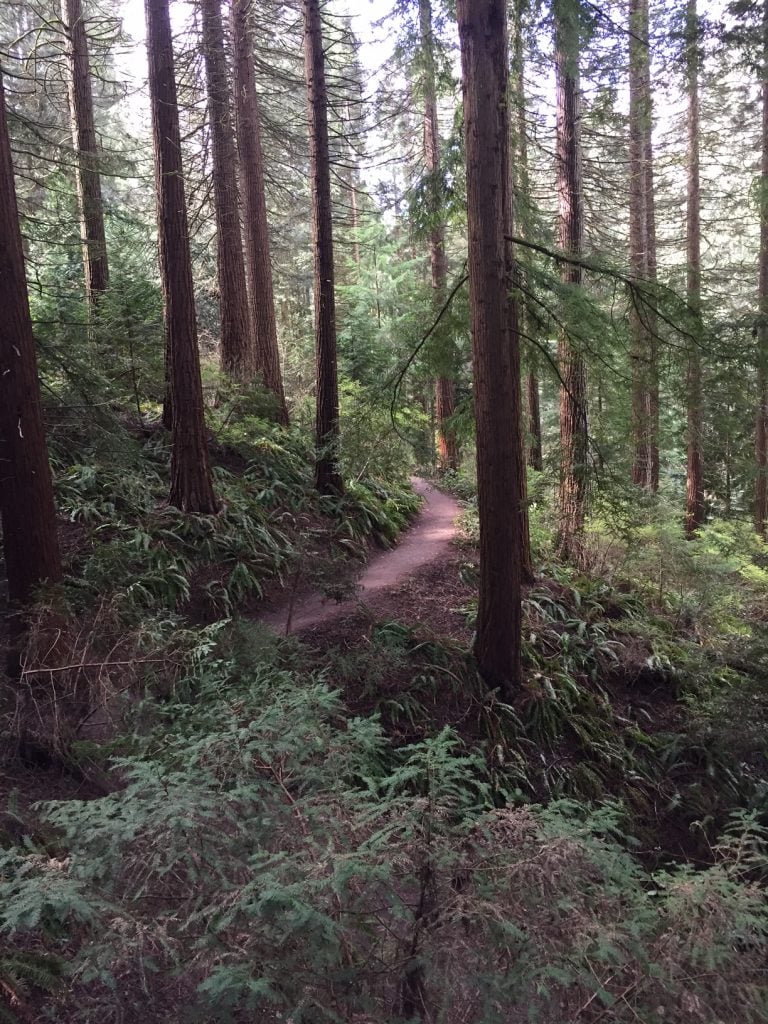
It may be old news, but only in parts; continuing research is revealing even more about the benefits of green as in “green space“. Turns out that you don’t need acres of green to feel the benefit of plants and nature; even a small patch of grass or a houseplant on your desk has theraputic value. So, no need to rush off for a forest-bathing vacation – a simple potter in the greenhouse will do, as will a moment of reflection in your garden.
There’s all sorts of green out there, and it’s worth remembering that flower color comes and goes, but green goes on forever. Every season brings its own green tints. In winter there’s all the the evergreens, glossy and glittering with reflected winter light. Spring is all about fresh apple green, tender and yielding to warmth of the sun. But in Summer the garden heats up and greens expand into gold, silver and blue to purple, and that is when the value of a good foliage mix comes into its own. Here are some leafy greens that are easy to find and easy to grow — even in dry conditions in the High Plains and steppe-like conditions elsewhere.
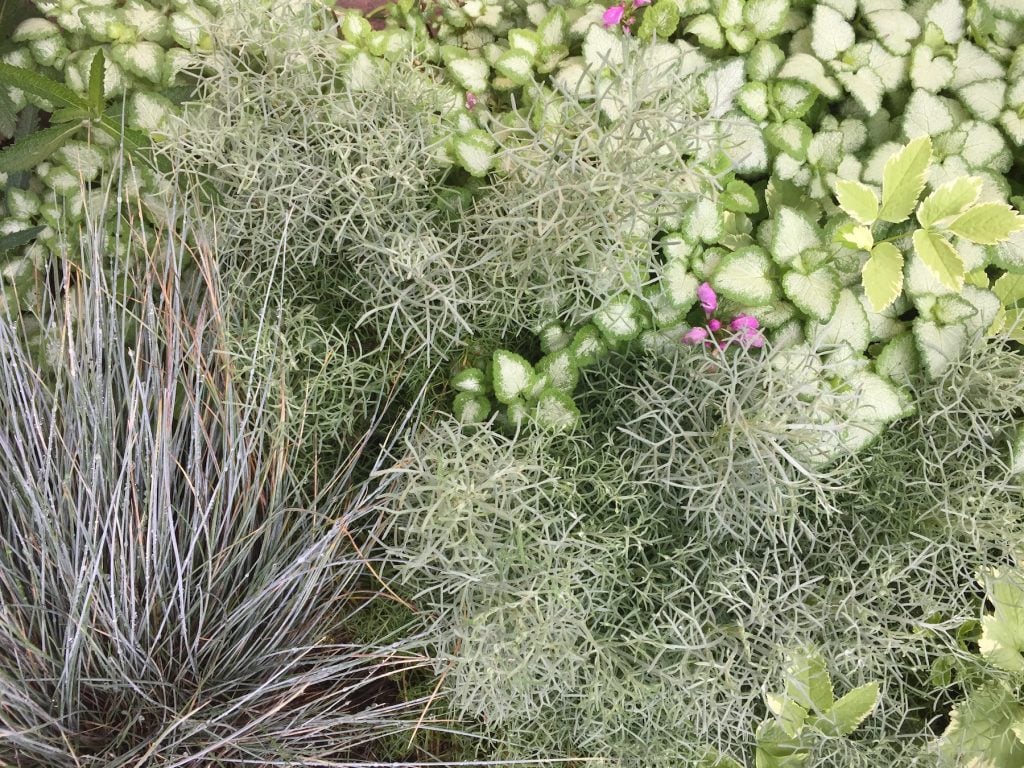
Foliage texture and flowering plants are mutually enhancing. For this reason grasses blended with daisy-flowered perennials like coneflowers or black-eyed Susans are such a good mix. A great blender is Mexican hair grass which fades from soft pea green to golden straw, foaming through the border. Because of its fine filamented texture annuals easily self-sow around and through it, and the grass itself spreads its seeds far and wide, so thinning is recommended.
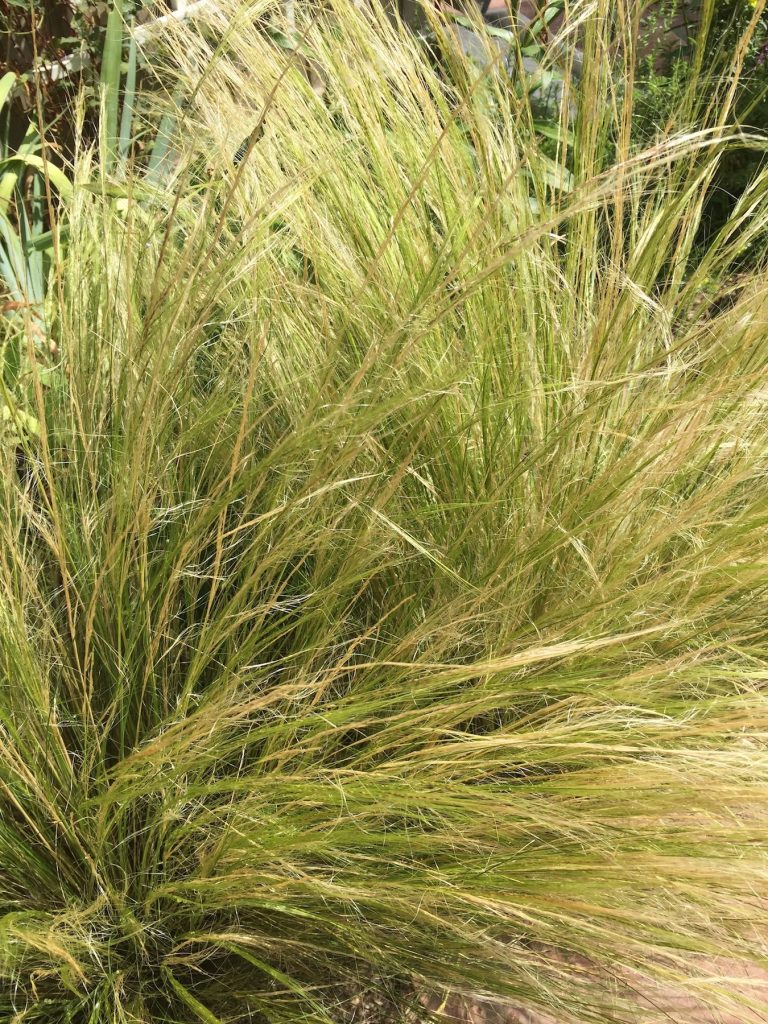
Acid greens, lime green, parrot green, you name it, this tropical tint is a garden must have and when combined with distinctively shaped leaves in a mounding spreading shrub adds a bold anchoring splash to a mixed border. One of the best is the vividly colored ‘Tiger Eyes’ a cultivar of the native staghorn sumac Rhus typhina. Similar in leaf texture but less acid in color is the golden elderberry ‘Lemony Lace’; its sister ‘Black Lace’ is a polar opposite with inky purple foliage and flowers that look to be dipped in red wine.
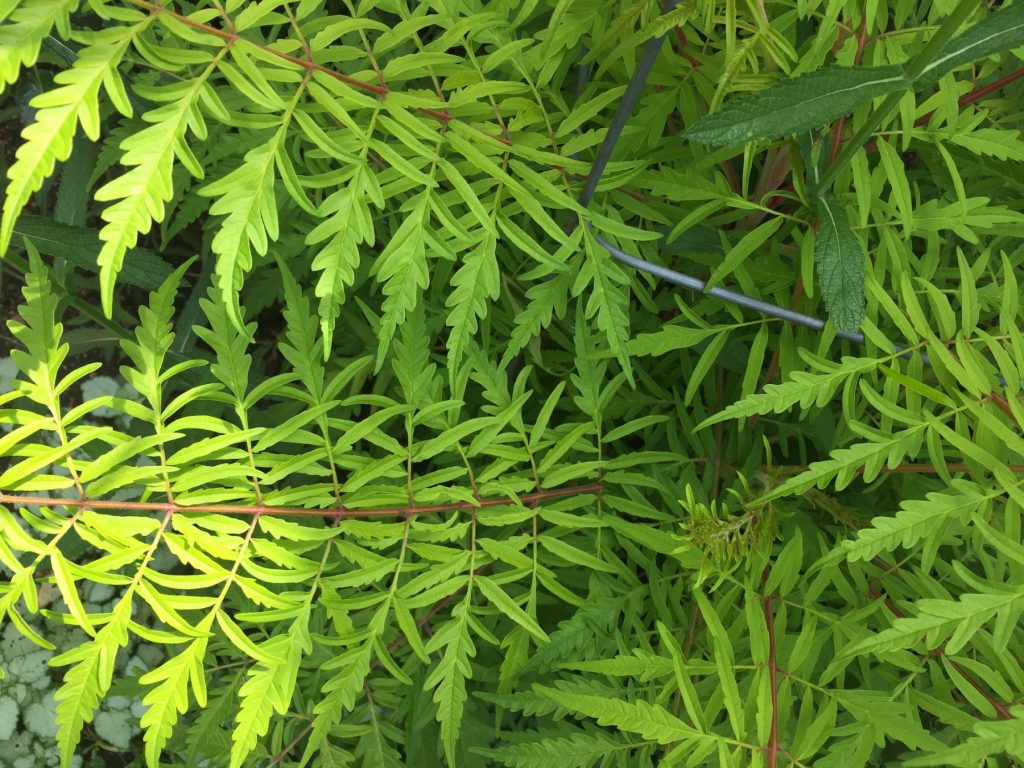
And, finally, don’t forget about the herbs. They’re true multifunction plants for a restful garden, with scented leaves in a wide array of shapes, textures and green tints. Simple sage is a good all rounder with steely grey, felted leaves. It will make a tidy mound in a sunny spot and is a good groundcover beneath flowering shrubs, especially roses. And of course the leaves are a great asset in the kitchen, and plants are widely available.
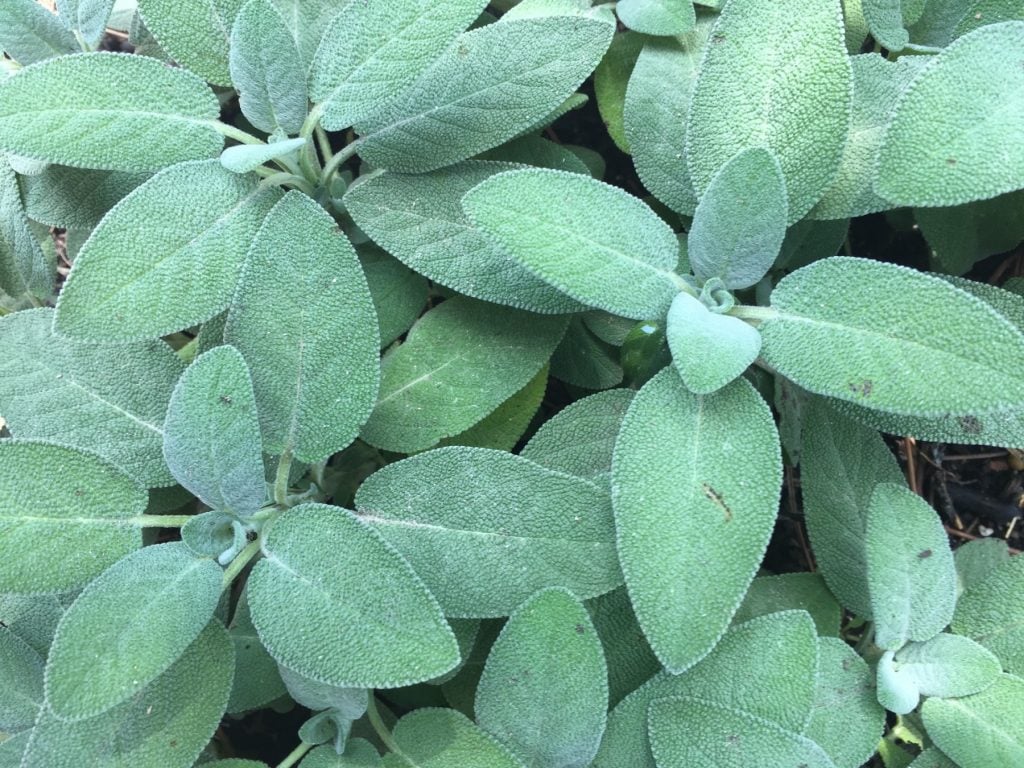
If this has whetted your appetite to make the most of green, try to veer away from the flowering perennials the next time you visit your local nursery and take a long (and longing) look at the foliage plants on offer. You’ll be pleasantly surprised, your mood elevated, and disposition calmed at the prospect of going green.
For more ideas, my book Gardening with Foliage, Form and Texture is available here.
© Text and photos Ethne Clarke, 2017


